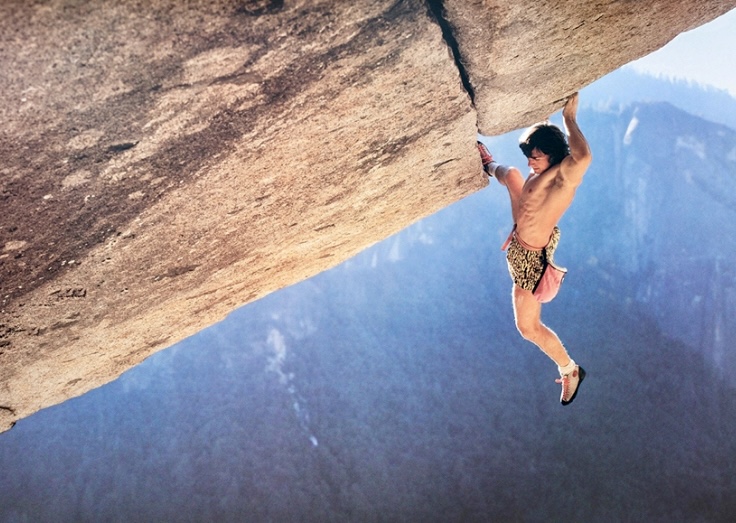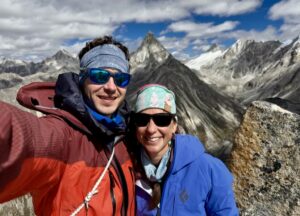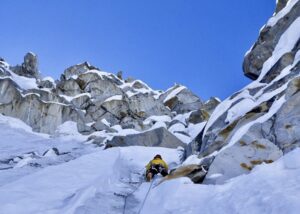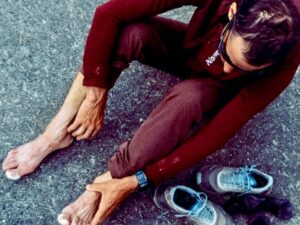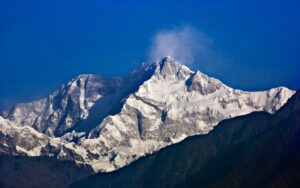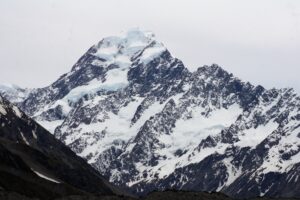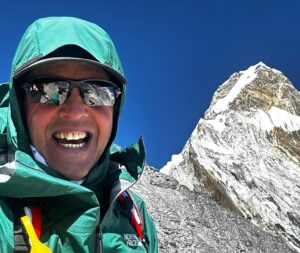Today, German climber Wolfgang Gullich would have turned 65. He transformed sport climbing with his bold ascents and innovative training, leaving a legacy that endures despite his tragic death at the age of 31. Gullich pushed boundaries with daring routes in the Alps, Yosemite, the Frankenjura, Patagonia, and the remote spires of the Karakoram.
Early years
Gullich was born on October 24, 1960, in Ludwigshafen am Rhein, Germany. His father introduced him to aid climbing at the age of 13, teaching his son to use gear to ascend the sandstone cliffs of the Sudpfalz region. With his brother, Gullich spent weekends exploring these crags.
Gullich made solo climbs at age 15. By 16, he was free climbing routes. In 1977, his brother died in a climbing accident while the two boys were climbing together in the Sudpfalz region. This tragedy profoundly impacted Gullich.
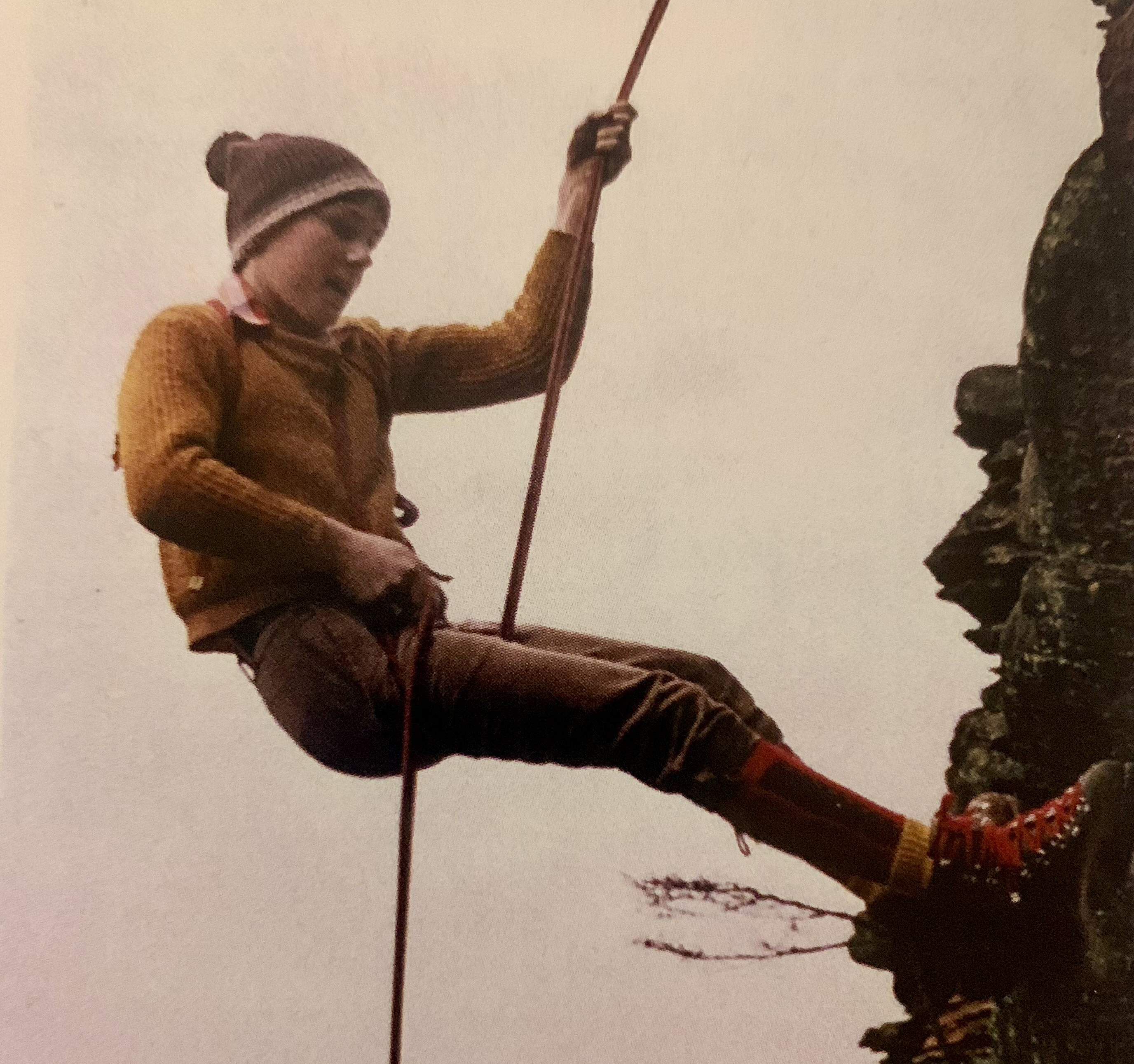
Wolfgang Gullich rappelling at age 12. Photo: Tilmann Hepp
Frankenjura
In the early 1980s, Gullich relocated to the Frankenjura climbing area, a region of limestone crags in northern Bavaria. There, he joined a group of elite climbers, including redpoint pioneer Kurt Albert and Jerry Moffatt. With Albert, a fellow visionary who shared his passion for free climbing, Gullich pioneered several routes.

Wolfgang Gullich, left, with Kurt Albert. Photo: Tilmann Hepp
In the 1980s, sport climbing was divisive: Traditionalists scorned bolts as “cheating,” but Gullich and Albert’s redpoint philosophy (free climbing with pre-placed protection) redefined the sport’s ethics. A redpoint climb involves practicing a route before a clean ascent, which is when someone ascends a route without falling or using gear. It became Gullich’s specialty.
In 1984, Gullich redpointed Kanal im Rucken (8b/5.13d) in the Frankenjura, the world’s first climb at that grade. In 1985, he ascended Punks in the Gym (8b+/5.14a) at Australia’s Mount Arapiles,another global first. In 1987, he sent Wallstreet (8c/5.14b) in the Frankenjura.
Gullich’s masterpiece came in 1991, when he climbed Action Directe (9a/5.14d), a 15m, 45° overhanging route with tiny holds, at Waldkopf in the Frankenjura. To this day, it remains a benchmark for sport climbing’s elite.
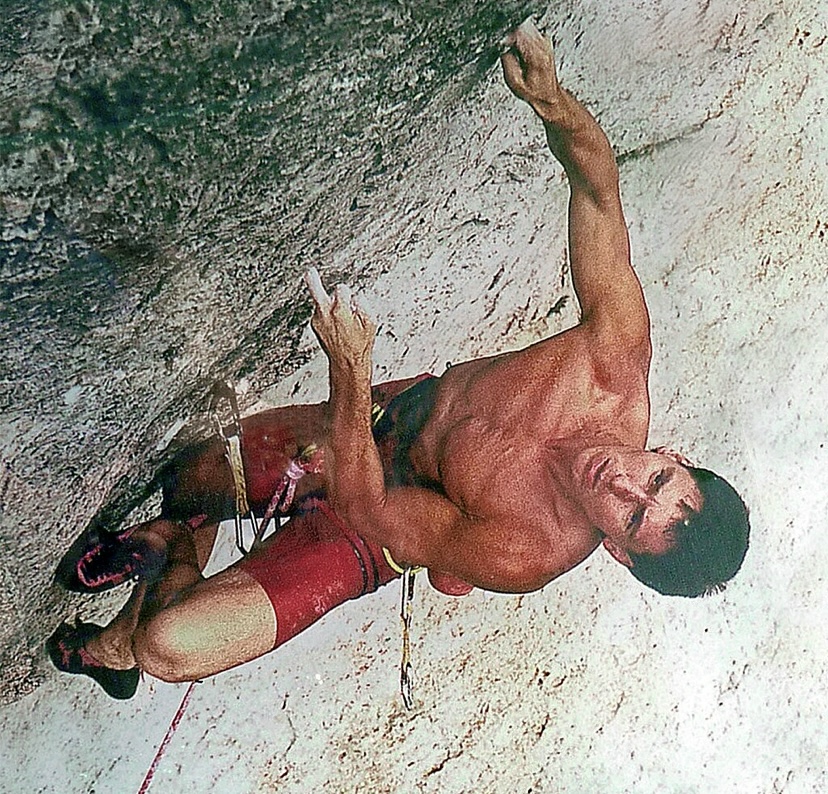
Wolfgang Gullich in the Frankenjura. Photo: Wikimedia
The Campus Board
Gullich’s success wasn’t just physical. He approached climbing like a scientist, studying biomechanics, psychology, and even Eastern philosophy to enhance his performance. To tackle Action Directe’s brutal finger holds, Gullich invented the Campus Board in 1988, a simple set of wooden rungs hung in a Nuremberg gym called Campus. It trained explosive finger strength without foot support.
It worked: Gullich could do pull-ups on one finger per hand, a feat showcased on German TV.
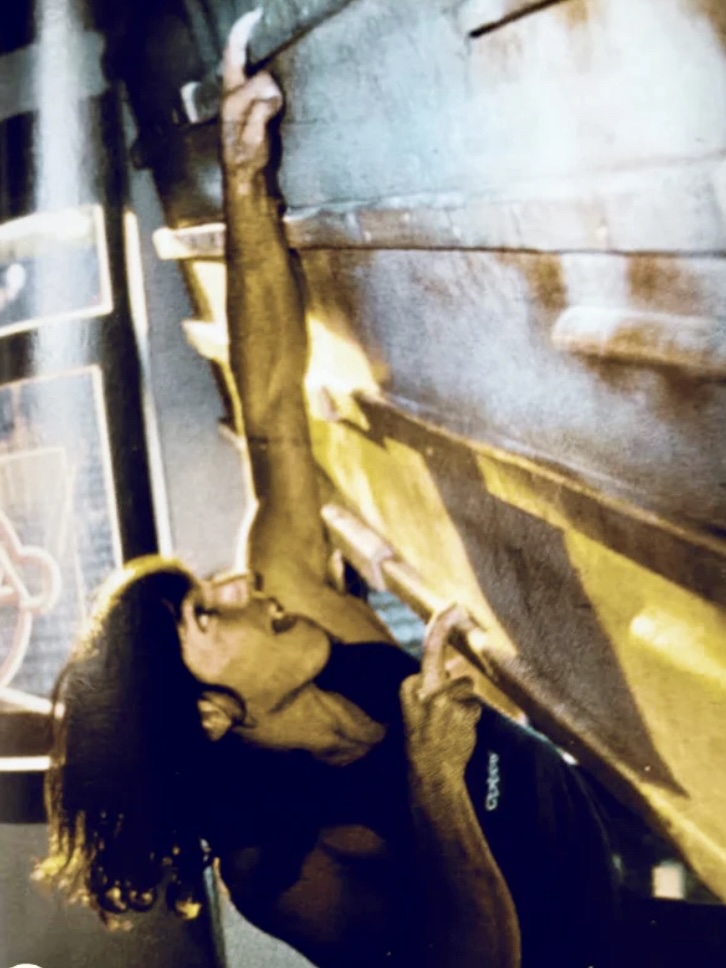
Wolfgang Gullich training on the Campus Board in Nuremberg. Photo: Pasoclave
Big walls
Gullich’s talent wasn’t just confined to sport climbing’s bolted routes. He also completed bigwall climbs in some of the world’s wildest places. In 1988, he free climbed the Yugoslavian Route (5.12) on the Nameless Tower of the Trango group in the Karakoram.
A year later, alongside Albert, Christof Stiegler, and Milan Sykora, he made the first ascent of Eternal Flame (7b+ A2) on the same tower, freeing most of the route but using some aid because of the extreme conditions. In 1991, Gullich joined a team on the first ascent of Riders on the Storm on Patagonia’s Paine Towers.
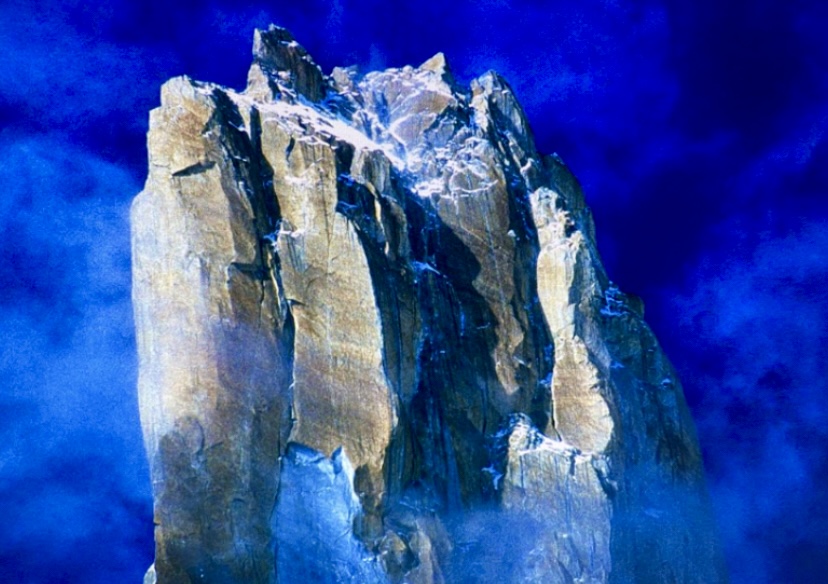
The Nameless Tower, in the Trango Towers group. Photo: Sebastian Alvaro
Free solos
Gullich’s free solos were even more daring. In 1986, after a 10m fall on England’s Master’s Edge that severely injured his back, Gullich sought redemption in Yosemite. He targeted Separate Reality, with no footholds, just hand jams over a significant drop below him. He free soloed it, moving with calm precision. During the climb, renowned photographer Heinz Zak captured Gullich suspended mid-jam, chalk bag trailing. The image became an iconic climbing photo and is the Featured image of this article.
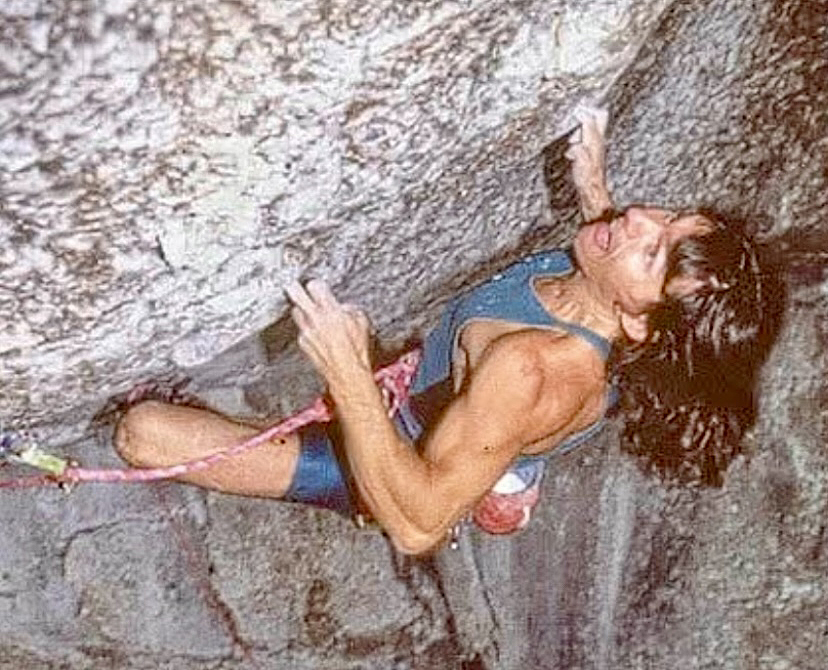
Wolfgang Gullich on ‘Action Directe,’ Frankenjura. Photo: Heinz Zak
Fatal accident
On August 29, 1992, Gullich had a radio interview in Munich. After the interview, he was driving home to Nuremberg when he fell asleep on the A9 Autobahn near Ingolstadt and flipped his car. In the hospital, he was placed into an induced coma, but he died two days later, at age 31.
Legacy
He rejected the 1980s competition trend, believing that a successful climber is someone who has done many hard routes in many areas, not just a local specialist. Gullich’s impact went beyond physical feats: his mindset reshaped climbing culture. He saw climbing as a blend of art and science, where creativity and discipline met.
According to writer Tilmann Hepp, Gullich didn’t just climb routes, he created problems that forced climbers to evolve. Gullich’s Frankenjura climbs, such as Wallstreet, introduced dynamic moves and finger-intensive holds that challenged the status quo. Climbers had to adapt, training harder and smarter to keep up.
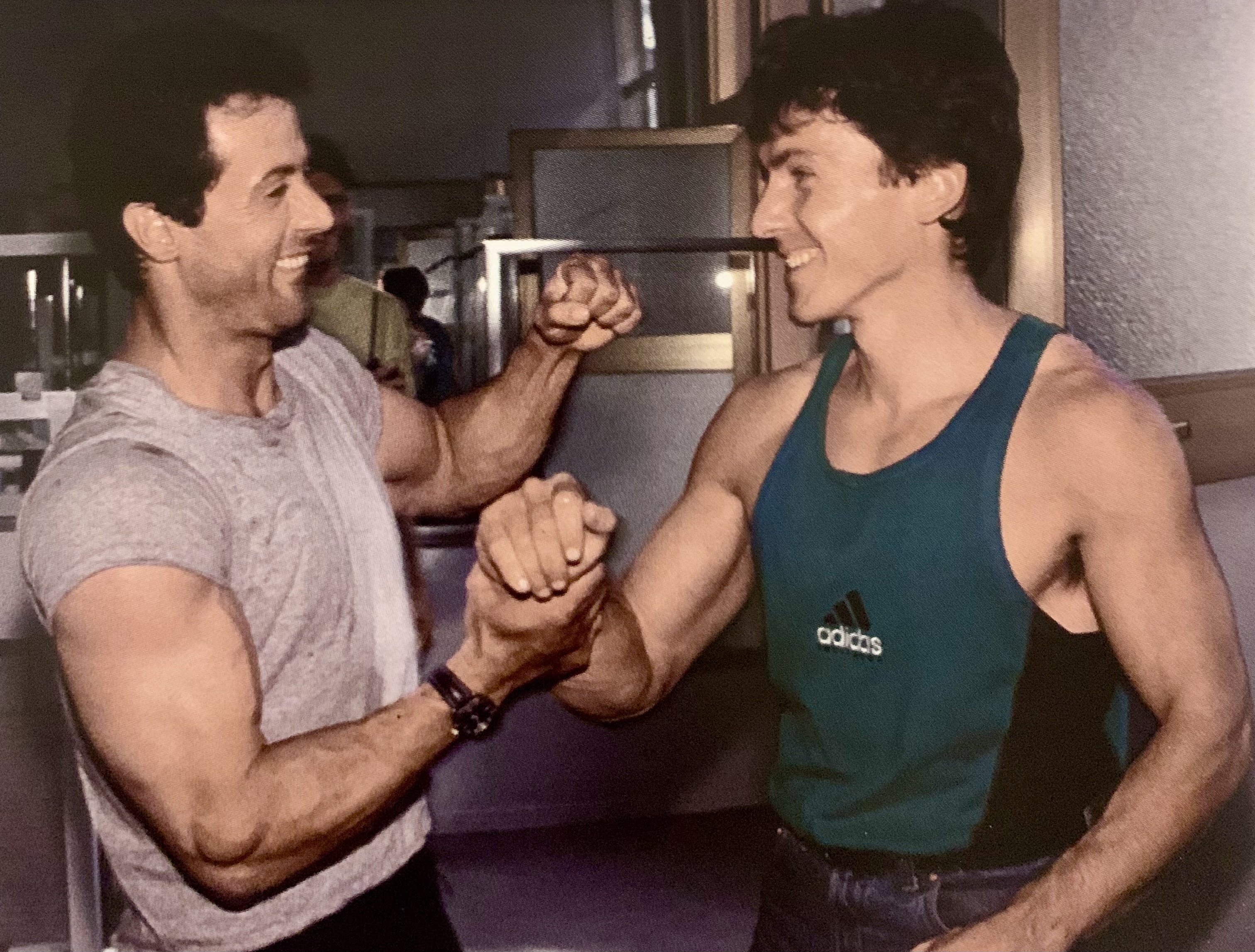
Sylvester Stallone and Wolfgang Gullich. Photo: Tilmann Hepp
Gullich’s invention of the Campus Board wasn’t just a tool; it was a shift in how climbers prepared. Before Gullich, training was often haphazard: pull-ups on doorframes or random hangs. Gullich brought structure, focusing on explosive power and finger strength. This approach inspired a generation, from early adopters like Jerry Moffatt to modern climbers like Alex Megos, who still train on Campus Boards.
Gullich’s influence is everywhere in modern climbing. Action Directe remains a very difficult challenge, and only a few climbers, like Iker Pou, Alex Megos, and Adam Ondra, have repeated it, often calling the route a humbling experience.
Gullich’s training principles, based on specificity, progression, and recovery, are now core to climbing programs. He even worked as a stunt double for Sylvester Stallone in Cliffhanger (released posthumously in 1993).
We recommend reading Wolfgang Gullich: A Life in the Vertical by Tilmann Hepp (1994), which is the definitive biography, packed with his journals, photos, and quotes.
Below, you can watch a documentary on Gullich, with English subtitles available:
